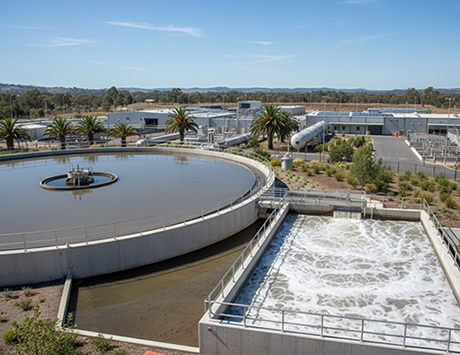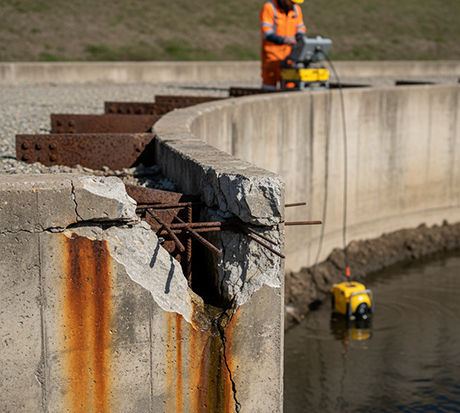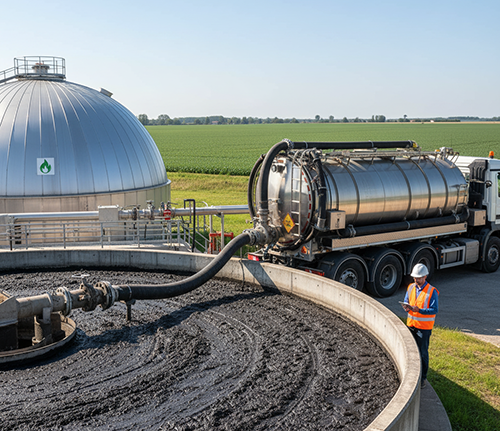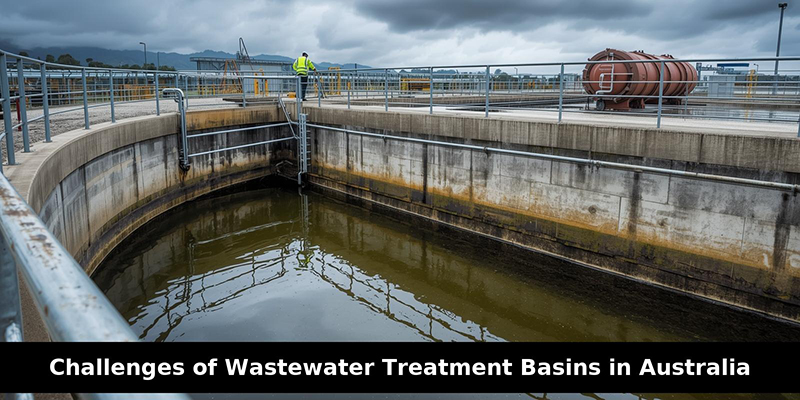A wastewater treatment basin, also known as a sedimentation tank, is where suspended solids settle down before they move to the next stage. Without basins, large particles can clog equipment or reduce the efficiency of the biological treatment process. In the following text, we have discussed the main challenges of wastewater treatment basins in Australia.
What Is a Wastewater Treatment Basin?
A wastewater plant basin is a large tank inside a treatment plant that serves different purposes, including:
- Holds the wastewater to even out the pollutant level before the treatment begins.
- Adds oxygen to feed bacteria that break down organic matter and ammonia.
- Allows the heavier pollutants to settle as sludge, while cleaner water flows to the next part.
- Stores or treats the sludge collected from other steps.
There are also different types of wastewater treatment basins in Australia. Sedimentation basins are where the suspended solids settle down with the help of gravity. Aeration basins (or aerated lagoons) add oxygen into the wastewater to encourage the biological oxidation of organic waste. Septic tanks hold wastewater and allow bacteria to decompose organic matter and separate solids from the liquid sewage.

Main Challenges of Wastewater Treatment Basins in Australia
As it is clear, the basin is an important part of the wastewater treatment plants; therefore, any damage to it will affect the whole system. Here are the main challenges of wastewater treatment basins in Australia:
1. The Basin Ages Over Time.
Wastewater treatment basins are like any building or bridge; so, they age and wear down over time. Depending on the material used, they might crack, leak, or collapse entirely. If the technicians find the problems early, they can save the plant before serious damages occur. Repairing wastewater treatment plants in Australia is much harder because old equipment may not have spare parts anymore. In such cases, the engineers have to fix things with their creativity or use custom-made parts.
2. The Basin’s Parts might Corrode Silently.
Some parts of the basins are underground or underwater. That means the technicians do not notice the corrosion or decay until the damage is severe. By the time it’s discovered, the basin might already be leaking, structurally unstable, or even polluting the environment. Since fixing the damaged parts is usually costly, time-consuming, and complicated, almost all water treatment companies in Australia have remote sensors, cameras, or robots to monitor and inspect the basins, especially the underground parts.

3. Sediments Pile Up in the Basin.
After some years, sand, dirt, and other heavier pollutants pile up at the bottom of the basins. This lowers the basin’s water capacity and slows down the water flow. Cleaning the basins is not easy. In fact, it is one of the main challenges in the water treatment industry. To clean them, the technicians drain the water, then clear the tank with special equipment. This procedure is time-consuming, expensive, and labour-intensive. Not to mention that it disrupts the plant’s operation for a few days or even weeks.
4. Monitoring Water Level Is Hard.
Knowing the exact water level in a wastewater treatment basin is important but hard, as the flow rates change a lot (especially during the rainy months) and debris and solids accumulate fast. If the basin has corroded, even float switches or ultrasonic sensors cannot measure accurately.
Also Read: Stormwater Treatment in Australia: Protecting Waterways, Infrastructure, and Communities.
5. Getting Rid of Sludge Is Difficult.
One of the biggest challenges in water treatment is how to remove sludge. The problem is that sludge is wet, heavy, and can contain harmful substances; therefore, it’s hard to dry, transport, or burn it. The good news is that, if environmental engineers manage it properly, it can actually be turned into useful products like biogas (a renewable energy source) and natural fertiliser for farming.

6. Discharging Untreated Water Can Damage the Environment.
Sometimes there is a serious problem with the basin, and its water should be discharged. The untreated water that gets back to nature can contaminate water resources, harm aquatic life, and degrade ecosystems. Also, the workers may be exposed to pathogens, hazardous gases like methane, and physical hazards when draining the water.
The Last Words
Wastewater treatment basins in Australia face lots of challenges, from aging and corrosion to sludge accumulation. Any damage to the basin will have an irreparable effect on the whole system; therefore, it’s crucial to maintain it regularly. AquipTech (AIMEQUIP) is a leading Australian firm that provides advanced wastewater treatment technologies and chemical dosing solutions. With its high-standard equipment and innovative solutions, it has helped overcome the challenges of wastewater treatment basins in Australia. Get more information about the services and products of AIMEQUIP via this link.
FAQs about Wastewater Treatment Basins in Australia
- What are the important factors when designing Wastewater treatment basins?
The length, width, and depth of the basin are important factors because they help calculate the water flow and retention time.
- What does an equalisation basin do?
It buffers (moderate) inconsistent wastewater flow. In other words, it ensures that water flows to the plant constantly and at a proper level.
- What does Hydraulic Retention Time mean in wastewater treatment basins?
Hydraulic Retention Time (HRT) is the average time that wastewater spends in the basin. It plays an important role in organic matter degradation and biogas production. Source
- How are wastewater treatment basins cleaned?
Operational workers use a water jet to remove sediment, sludge, and other pollutants from the bottom and side of the basin. In Australia, the basins are cleaned every 6-12 months to prevent system blockage and damage.

